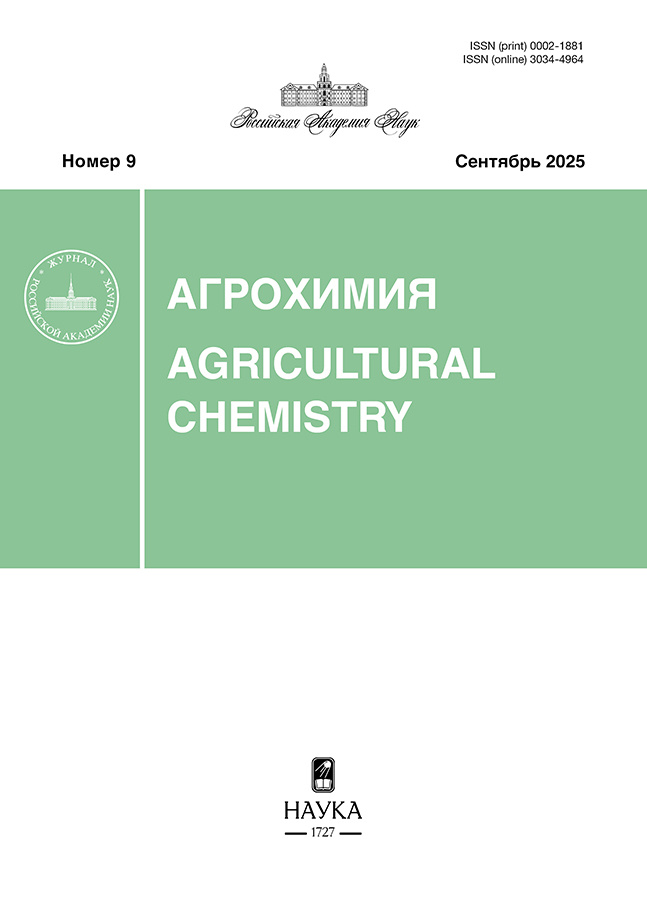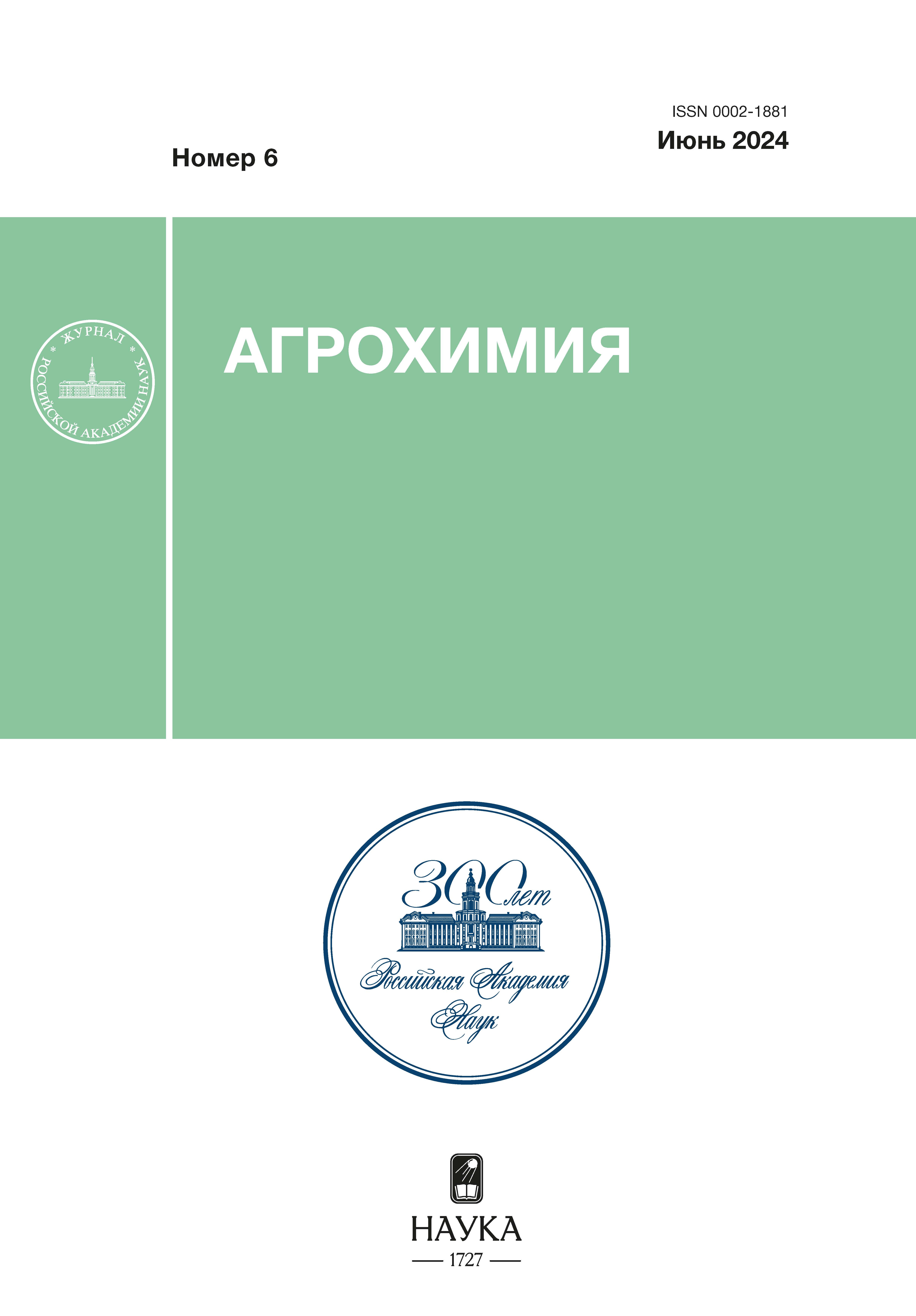Влияние различных систем удобрения на продуктивность яровой пшеницы в длительном стационарном опыте
- Авторы: Волынкина О.В.1
-
Учреждения:
- Уральский федеральный аграрный научно-исследовательский центр Уральского отделения РАН
- Выпуск: № 6 (2024)
- Страницы: 34-41
- Раздел: Удобрения
- URL: https://archivog.com/0002-1881/article/view/647186
- DOI: https://doi.org/10.31857/S0002188124060055
- EDN: https://elibrary.ru/CXXFVL
- ID: 647186
Цитировать
Полный текст
Аннотация
Представлены результаты наблюдений за реакцией растений на применение 6-ти систем удобрения, испытанных в течение 24 лет в повторных посевах яровой мягкой пшеницы после стерни. Визуальные и фенологические наблюдения за растениями раскрыли особенности их роста и развития на неудобренных и удобренных фонах. Определение засоренности посева выявило влияние удобрений на величину долей пшеницы и сорных растений в массе снопа в фазе формирования зерновки. В большей части лет этого опыта удобрения не увеличивали засоренность посева, лишь в течение 5-ти лет из 18-ти отмечено такое отрицательное действие. Показатели структуры урожая пшеницы (количество колосьев на 1 м2, озерненность колоса и масса 1000 зерен) при применении удобрений улучшались, особенно в годы с достаточным увлажнением. Содержание клейковины в зерне и муке при внесении удобрений в дозах N40–60 без Р20 и на его фоне существенно повышалось, увеличивая частоту лет с качеством пшеницы 3-го класса. Агротехническая и экономическая оценка 6-ти систем удобрения бессменной пшеницы после стерни выделила 4 варианта с окупаемостью, близкой к получению 10 кг зерна на 1 кг действующего вещества удобрений.
Полный текст
Об авторах
О. В. Волынкина
Уральский федеральный аграрный научно-исследовательский центр Уральского отделения РАН
Автор, ответственный за переписку.
Email: kniish@ketovo.zaural.ru
Россия, 620142 Екатеринбург, ул. Белинского, 112а
Список литературы
- Копытова Е.Д. Тенденции развития отрасли минеральных удобрений в России // Соц. пространство. 2016. № 4(06). С. 1–16.
- Волкова А.В. Рынок минеральных удобрений. М.: Нац. исслед. ин-т “ВШЭ”, 2015. 67 с.
- Кручинина В.М., Рыжкова С.М. Рынок удобрений в России: состояние и направление развития // Вестн. ВГУИТ. 2021. Т. 83. № 1. С. 375–384.
- Лукин А.С., Папырин В.Б. Методология определения экономической эффективности применения минеральных удобрений // Вестн. ОмГАУ. 2016. С. 1–7.
- Болотов С.В. Экономическая эффективность использования минеральных удобрений в сельскохозяйственных организациях северной зоны Краснодарского края: Дис. … д-ра эконом. наук. Краснодар, 2002. 205 с.
- Нестеренко В.А. Формирование урожая и качества яровой пшеницы в зависимости от доз азотных удобрений и содержания подвижного фосфора в дерново-подзолистой почве: Автореф. дис. … канд. с.-х. наук. М., 2021. 28 с.
- Малов Н.П. Продуктивность сортов яровой пшеницы в зависимости от нормы высева на черноземе выщелоченном юго-восточной части Волго-Вятской зоны: Автореф. дис. … канд. с.-х. наук. Уфа, 2018. 24 с.
- Земцова Е.С., Боме Н.А., Земцова Е.С. Влияние густоты стояния растений на структуру урожая яровой мягкой пшеницы // Совр. пробл. науки и образ-я. 2015. № 2.
- Захаров В.Г., Яковлева О.Д. Изменение урожайности и элементов структуры урожая у сортов яровой пшеницы разных периодов сортосмены // Достиж. науки и техн. АПК. 2015. Т. 29. № 10. С. 53–57.
- Агеева Е.В., Леонова И.Н., Лихенко И.Н., Советов В.В. Масса зерна колоса и массы тысячи зерен как признаки продуктивности у сортов яровой пшеницы разных групп скороспелости в условиях лесостепи Приобья // Письма в Вавилов. журн. генет. и селекции. 2021. № 7(1). С. 5–11.
- Ворончихина И.Н., Рубец В.С., Ворончихин В.В., Пыльнев В.В. Комплексная оценка яровой мягкой пшеницы в условиях ЦРНЗ с применением метода индексов // Электр. научн.-производ. журн. “Агро- ЭкоИнфо”. 2022. № 6. С. 1–9. https://doi.org/10.51419/202126614
- Демина Н.Ф. Влияние погодных условий на урожайность и качество зерна яровой пшеницы в условиях лесостепи Среднего Поволжья // Аграрн. наука Евро-Северо-Востока. 2022. № 23(4). С. 433–440. https://doi.org/10.30766/2072-9081.2022.23.4
Дополнительные файлы











